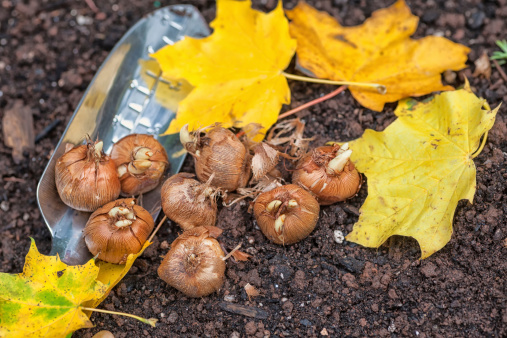By Maureen Gilmer
Scripps Howard News Service
Imagine being raised in a comfortable modern home, then suddenly moving to a shack in the desert. It’s hot and dry. There’s little water to be had. You wither in the sudden change of climate.
That’s what happens to water-thrifty species of container-grown trees, shrubs and perennials when transplanted in the spring in the West. With this region’s dry season lasting from May to December in some years, there’s no promise of rainfall for spring-planted species. Even the most naturally drought-resistant species will struggle. The problem isn’t the heat itself, but a lack of roots to gather moisture underground to keep leaves fully hydrated. Spring planting doesn’t allow enough time to adapt before heat descends.
When you plant in the fall, there’s a long period of moderate dry weather when transplants can root like crazy before winter. When growth begins the following spring, these plants will do far better in the long run and are more likely to naturalize earlier.
Success requires you to understand how plants originating in dry climates around the world survive drought. Nearly all except succulents develop a deep and extensive root system. This helps them access soil moisture trapped deeper down during the dry season when surface soils are parched.
Fall planting also gives transplants more time to break out of the pot-shaped root ball that is key to survival. Your primary goal is to coax roots to venture into surrounding natural soil using water as an incentive.
Warm, dry autumn weather combined with correct irrigation practices give transplants a reason to root vigorously until frost slows growth. By the holidays, your plant may not show new growth, but it will have made considerable headway underground. When spring comes, the roots are already established and ready to travel even deeper seeking moisture.
What few realize is that growing plants in pots interferes with early rooting patterns. Taproots are cut off, and broad horizontal roots encounter the pot wall. For this reason, even the most drought-resistant species must be retrained to develop an expansive root system.
The best way to water in these early years is with deep irrigation rather than surface spray systems. This very slow application of water helps it percolate downward through the center of the container-shaped root ball. Once it is saturated, the water is drawn by gravity deeper yet, well below the root ball. Then when surface soil dries out, root growth shifts downward to access this store of moisture.
The best way to water your new natives is to put the garden hose on trickle at the base of the stem and let it run an hour or two. This saturates the root ball and the soil deeper down. It’s especially important in heavy clay soils that are painfully slow to absorb moisture anytime. Once the ground is sufficiently saturated, you need not water again for a week or more.
This water regime is vitally important for Western natives in their first and second year after transplanting. Think of them as children who must be trained properly to become a productive adult. Failing to water deeply at the start results in a dysfunctional root system that may never achieve its optimal drought resistance. Watering deeply and less frequently trains the roots to grow as deep as possible, just as they would in the wild. Once the plants are well-trained, you can taper off gradually so they become wholly dependent on rainfall or a minimal drip system.
Though it may seem counterintuitive to plant in the fall, it’s the Western gardener’s secret to a successful xeriscape, or garden of native plants. Unlike spring-planted shrubs that struggle against the growing heat and drought of summer, these children of fall start life gently, become established far sooner and literally explode with new growth come spring.
(Maureen Gilmer is an author, horticulturist and landscape designer. Learn more at www.MoPlants.com. Contact her at mogilmer@yahoo.com or P.O. Box 891, Morongo Valley, CA 92256.)

